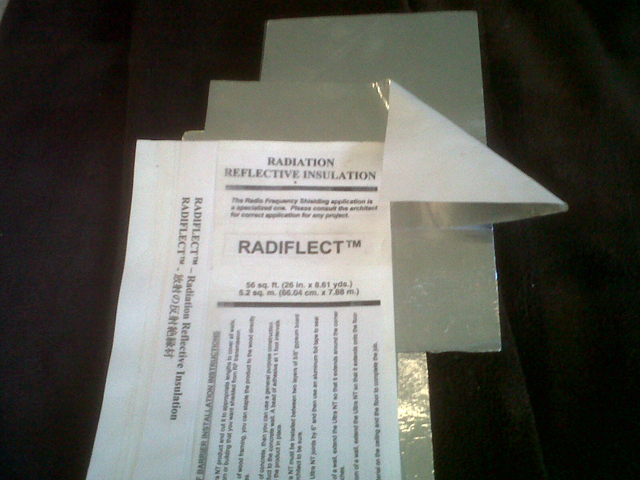RADIFLECT™ - Radiation Reflective Insulation
Product Description:
Reflective systems are fabricated from aluminum foils with a variety of backings such as kraft paper, plastic film, polyethylene bubbles, or cardboard. The resistance to heat flow depends on the heat flow direction, and this type of insulation is most effective in reducing downward heat flow. Reflective systems are typically located between roof rafters, floor joists, or wall studs. If a single reflective surface is used alone and faces an open space, such as an attic, it is called a RADIANT BARRIER. Radiant barriers are sometimes used in buildings to reduce summer heat gain and winter heat loss. They are more effective in hot climates than in cool climates. All radiant barriers must have a low emittance (0.1 or less) and high reflectance (0.9 or more).
Radiation reflective insulation (RRI) is "Insulation" with a radiant barrier component! An aluminum foil zeolite backed radiant barrier with a thickness of two mil (.002) will produce greater than >100 dB of attenuated EMI shielding. The biodegradable paper used to back the insulation shielding products is coated with EPA and FDA approved safe materials producing resultant surface resistivities greater than 1011 Ω.
| Physical Form |
Install Method |
Where Used |
Benefits |
Reflective Systems
| Foil-faced paper
Foil-faced polyethylene bubbles
Foil-faced plastic film
Foil-faced cardboard |
|
Foils, films, or papers: Fit between wood-frame studs joists, and beams |
Unfinished ceilings, walls, and floors |
DIY
All suitable for framing at standard spacing. Bubble-form suitable if framing is irregular or if obstructions are present
Radiant barrier effectiveness depends on spacing and heat flow direction
|
|


